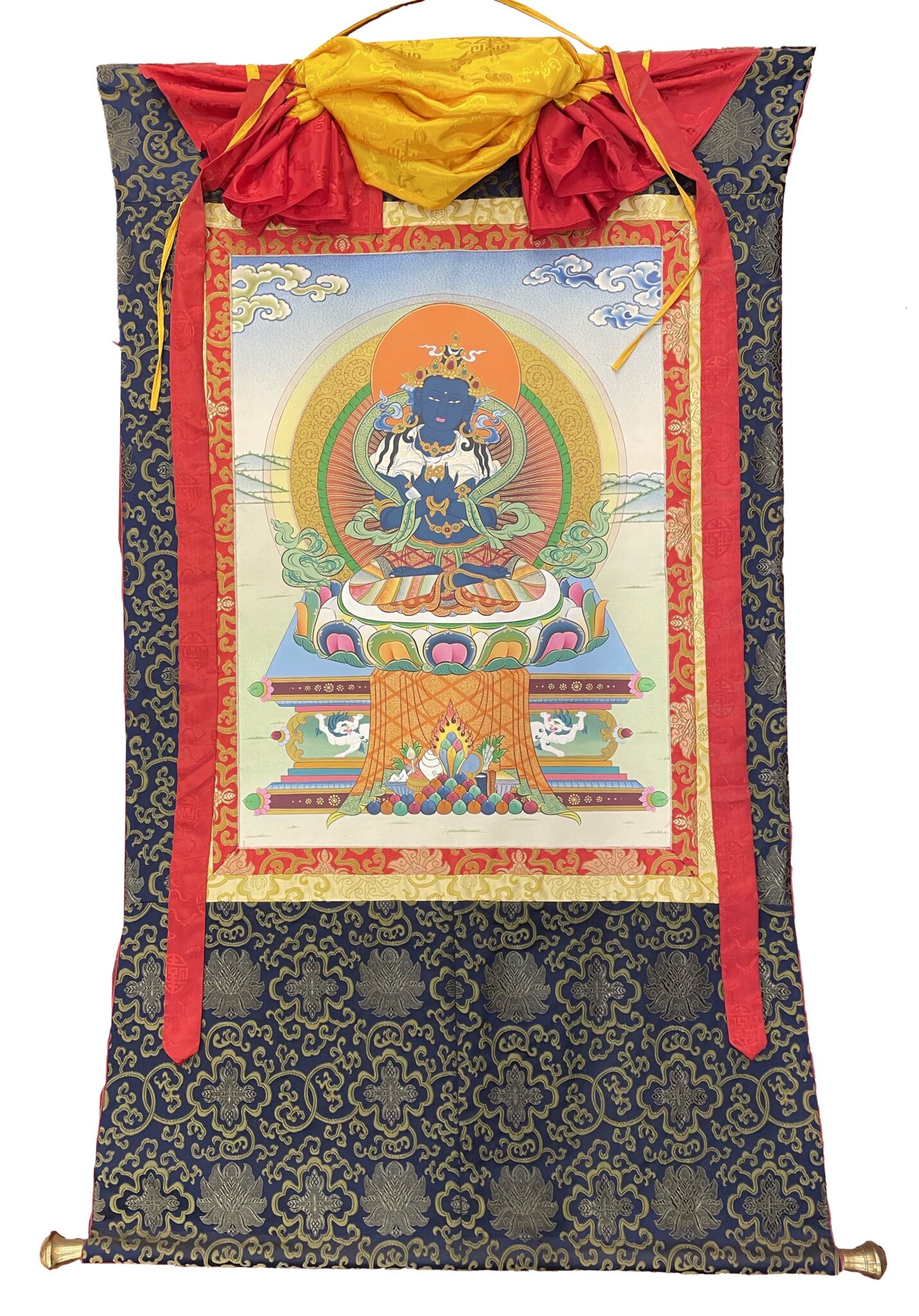







Vajradhara Tibetan Thangka
Vajradhara Tibetan Thangka is is hand painted on cotton canvas in Kathmandu, Nepal. The size of this thangka is 70*96 cm(28*39 inch).
| Weight | 300 Grams – 0.66 lbs |
| Size | 70*98 cm (28*39 inch) |
| Material | cotton canvas |
Iconography of Vajradhara
Vajradhara is a title given to the wielder of the vajra, an object associated with power and transformation since ancient times. The Sanskrit word “vajra” is composed of three syllables, “va,” meaning to bear or carry, “ja,” symbolizing energy, and “ra,” signifying strength, overcoming, or rising.
A vajra scepter is a special object that embodies the principle of change. Conjoined prongs at each end denote lightning bolts and they’re being conjoined denotes latent self reacting energy. In effect as important to Buddhism as the Cross to Christianity.
T-The Vajra is composed of four prongs surrounding a fifth central one, making five in total. It is a representation of lightning, which is more commonly associated with Hinduism. Varjadhara is depicted with his arms crossed in a gesture of triumph over the Three Worlds, accompanied by the syllable ‘Hum’, and seated on a lotus seat.
The Vajrasana, or Position of Transcendent Change, is a combination of the lotus seat and the crossed arms mudra. This posture is associated with Vajradhara, a figure in Vajrayana Buddhism, and is symbolized by the white sash draped across his chest, which represents the purity and essence of the school.
In fact, Mahayana & Hinayana both arise from the ancient Vajrayana tradition of personal transformation.















